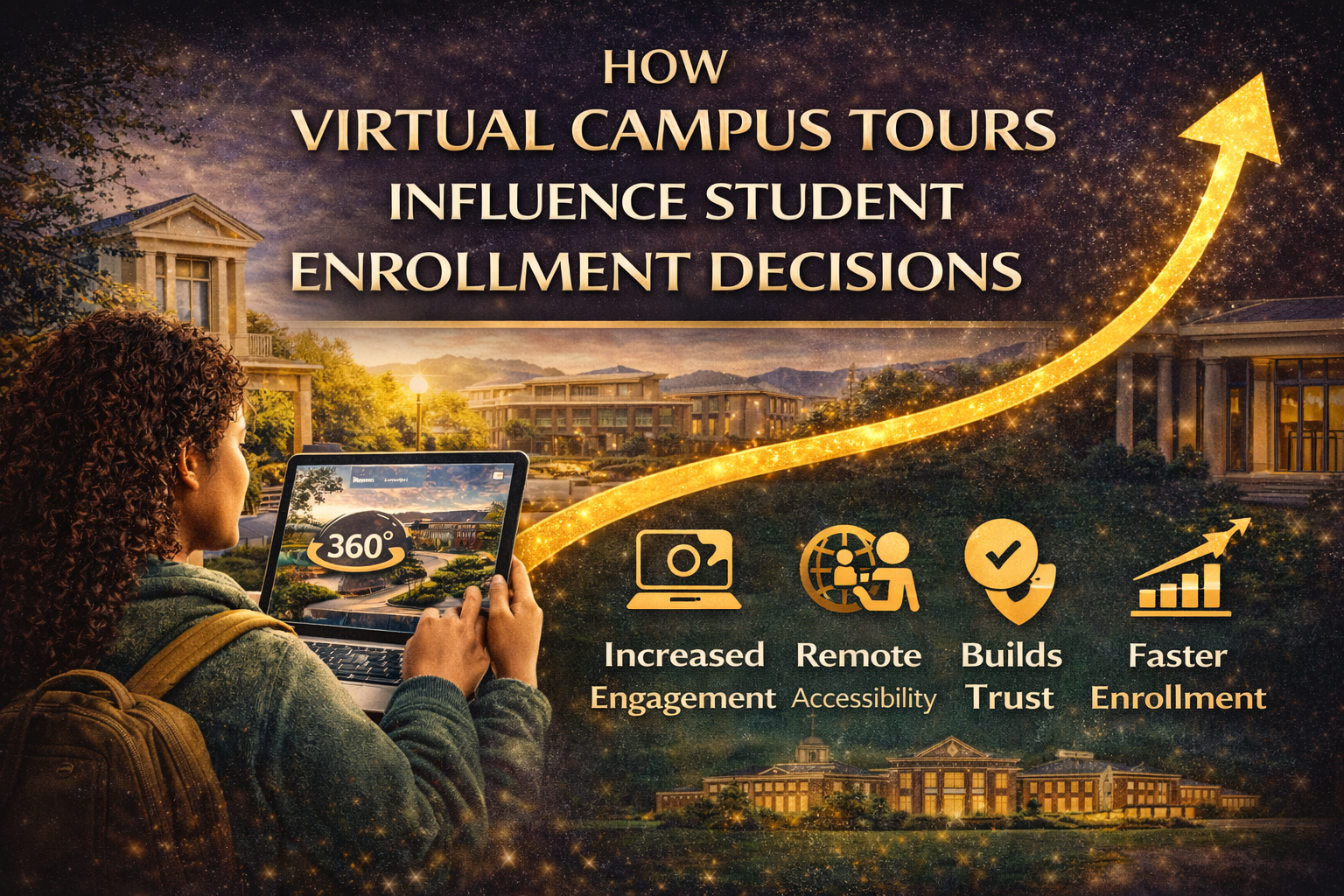The insurance industry is on the brink of a major transformation, thanks to innovative technologies that are changing how claims are processed. From augmented reality to artificial intelligence, these advancements promise to enhance customer experiences and streamline operations. In this article, we will take a 360 tour of these solutions, exploring their potential to reshape the future of insurance claims.
Key Takeaways
- Augmented and virtual reality are set to revolutionize how claims are assessed and processed.
- AI and machine learning will significantly speed up decision-making in insurance claims.
- Automation can help reduce the workload on claims adjusters, making the process more efficient.
- Customer feedback is crucial for developing better insurance products and services.
- Regulatory considerations will play a key role in the adoption of new technologies in the insurance sector.
Innovative Technologies Shaping Insurance Claims
The Rise of Augmented Reality
Augmented Reality (AR) is changing how insurance companies handle claims. AR applications allow claims adjusters to assess damage more accurately and efficiently. Imagine using your smartphone to scan a damaged car, and the app instantly provides an estimate for repairs. This technology speeds up the claims process and reduces the potential for errors.
- Streamlined Underwriting: AR helps underwriters access real-time data during property inspections, leading to quicker and more accurate risk evaluations. This technology enhances overall efficiency and accuracy, making the customer experience much smoother.
- Remote Assistance: AR helps risk assessors access information from remote specialists and identify weak spots that may need closer inspection.
- Efficiency: Using AR-enabled HUD glasses, field risk assessors can record instant notes during inspections, making the process less effort-consuming.
AR is becoming a staple for claims adjusters, enhancing efficiency and accuracy in damage assessments through real-time data overlays.
Virtual Reality Transformations
Virtual Reality (VR) is also making waves in the insurance sector. VR can create immersive experiences for both employees and customers. For example, insurers are using VR to create experiences that allow customers to explore their coverage visually, fostering transparency and understanding. VR training modules provide employees with immersive experiences that prepare them for various real-world situations, from underwriting to disaster response. This hands-on approach boosts knowledge retention and equips teams to handle challenges effectively. Allstate offers a VR-based claims assistant that helps customers navigate the claims process, providing step-by-step guidance and answering common questions in a virtual environment.
- Immersive Claims Processing: Imagine a claims adjuster being able to virtually step into an accident scene to assess damages in detail. VR allows this level of scrutiny, speeding up claims processing and improving customer satisfaction.
- Training Innovations: VR training modules provide employees with immersive experiences that prepare them for various real-world situations, from underwriting to disaster response. This hands-on approach boosts knowledge retention and equips teams to handle challenges effectively.
- Customer Engagement: Insurers are using VR to create experiences that allow customers to explore their coverage visually, fostering transparency and understanding.
AI and Machine Learning Integration
AI and Machine Learning (ML) are revolutionizing claims processing by automating tasks and improving decision-making. AI algorithms can analyze vast amounts of data to detect fraudulent claims, predict potential risks, and personalize customer service. This not only saves time and money but also enhances the overall customer experience. Data analytics for faster decisions is now a reality. AI security management is also a growing concern.
- Fraud Detection: AI algorithms can identify suspicious patterns in claims data, helping insurers to detect and prevent fraudulent claims.
- Risk Assessment: ML models can analyze historical data to predict future risks, allowing insurers to make more informed underwriting decisions.
- Personalized Service: AI-powered chatbots can provide instant customer support, answering questions and resolving issues quickly and efficiently.
Enhancing Customer Experience Through Technology
Let's be real, dealing with insurance claims can be a major headache. But what if technology could actually make it…dare I say…pleasant? It's not just about faster processing; it's about making the whole experience smoother and more human. Think less paperwork, more personalized attention. That's the goal, anyway.
Immersive Claims Processing
Imagine filing a claim without drowning in forms. Immersive claims processing is all about using tech to create a more engaging and intuitive experience. Instead of filling out endless documents, you might use augmented reality to show the damage or virtual reality to walk an adjuster through the scene. It's like bringing the claim to life, making it easier for everyone involved to understand what happened. CloudPano's mobile app could be a game changer for this.
Real-Time Assistance and Support
No one likes being left in the dark, especially when dealing with a claim. Real-time assistance and support means having someone available to answer your questions and guide you through the process, whenever you need it. This could be through chatbots, video calls, or even a dedicated claims specialist. The key is immediate access to information and support, reducing anxiety and frustration.
- Instant answers to common questions via chatbot.
- Live video support for complex claims.
- Personalized updates on claim status.
Interactive Policy Education
Let's face it: insurance policies can be confusing. Interactive policy education uses technology to explain coverage in a way that's easy to understand. Think interactive videos, simulations, and personalized explanations. The goal is to empower customers to make informed decisions about their coverage and understand what they're paying for.
It's about turning a dense legal document into something accessible and engaging. When customers understand their policies, they're more likely to be satisfied with their insurance experience overall.
Streamlining Claims Processing with Automation

Insurance claims used to be a paperwork nightmare, but things are changing fast. Automation is stepping in to make the whole process smoother and quicker. It's not just about saving time; it's about making things easier for everyone involved. Think less waiting, fewer errors, and a more straightforward experience overall. It's a big shift, and it's already showing some pretty impressive results.
Robotic Process Automation
Robotic Process Automation (RPA) is like having a digital assistant that never sleeps. It handles repetitive tasks, like data entry and document processing, freeing up human employees to focus on more complex issues. This not only speeds up the claims process but also reduces the chance of errors. Imagine a world where claims are processed around the clock, without the need for constant human intervention. That's the power of RPA. It's about making the mundane tasks disappear, so people can focus on what they do best. RPA can help with remote assistance.
Data Analytics for Faster Decisions
Data analytics is another game-changer. By analyzing vast amounts of claims data, insurers can identify patterns and trends that would be impossible to spot manually. This allows them to make faster, more informed decisions about claims, reducing processing times and improving accuracy. It's like having a crystal ball that helps you see potential problems before they arise. Here's a simple example:
- Identifying fraud patterns
- Predicting claim costs
- Optimizing resource allocation
Data analytics isn't just about crunching numbers; it's about gaining insights that can transform the way insurance companies operate. It's about turning raw data into actionable intelligence.
Predictive Modeling in Claims
Predictive modeling takes data analytics a step further. It uses statistical algorithms to forecast future claims trends and identify high-risk areas. This allows insurers to proactively manage risk and allocate resources more effectively. It's like having a weather forecast for claims, allowing you to prepare for potential storms before they hit. Predictive modeling can help with 360 virtual tour.
Here's how it works:
- Analyzing historical claims data
- Identifying key risk factors
- Developing predictive models
Addressing Challenges in the Insurance Sector
Data Security and Privacy Concerns
Data security is a big deal, especially with all the new tech coming into play. We're talking about sensitive customer info, and keeping it safe is paramount. Insurers need to be super careful about how they handle data, making sure they're following all the rules and regulations. It's not just about avoiding fines; it's about keeping customer trust. Think about it – would you want your insurance company to be careless with your personal details?
- Implement strong encryption methods.
- Regularly update security protocols.
- Conduct frequent security audits.
Investment and Implementation Costs
Let's be real, new tech isn't cheap. Getting all the fancy AI and VR stuff up and running can cost a pretty penny. It's not just the initial investment either; there's also the ongoing cost of keeping everything updated and maintained. Insurers need to weigh the costs against the benefits to see if it's really worth it. Sometimes, a simpler solution might be better, especially if you're a smaller company. The Virtual Tour Profit System can help you get started with VR without breaking the bank.
It's important to consider the long-term ROI when investing in new technologies. While the initial costs may seem high, the potential for increased efficiency and improved customer satisfaction can make it a worthwhile investment.
User Adoption and Training Needs
Getting people to actually use the new tech can be a challenge. It doesn't matter how cool the tech is if no one knows how to use it. Insurers need to provide proper training and support to their employees and customers. This means creating easy-to-understand tutorials, offering hands-on training sessions, and being available to answer questions. If people find the tech too complicated, they'll just stick with what they know, and all that investment will go to waste.
Future Trends in Insurance Claims Management
Integration of Blockchain Technology
Blockchain is making waves, and insurance claims are no exception. Imagine a world where claims are processed with unparalleled transparency and security. Blockchain's decentralized ledger system could cut down on fraud and speed up verification processes. It's not quite mainstream yet, but the potential is huge. Think about it: every step of the claim, from initial report to final payout, recorded immutably. It's a game-changer for trust and efficiency. For example, virtual staging software can benefit from blockchain's secure record-keeping.
Expansion of Remote Assessments
Remote assessments are already here, but they're about to get even bigger. Drones, AI-powered image analysis, and customer-submitted photos are becoming standard. This means faster claims, lower costs, and less hassle for everyone involved. It's all about convenience and speed.
- Self-service claim submission via mobile apps.
- AI-driven damage assessment from photos and videos.
- Real-time virtual inspections with adjusters.
The shift towards remote assessments isn't just about technology; it's about changing customer expectations. People want quick, easy solutions, and insurance companies need to deliver.
Personalization through Big Data
Big data is the key to personalized insurance experiences. By analyzing vast amounts of data, insurers can tailor policies, predict risks, and streamline claims processes. This isn't just about knowing your age and location; it's about understanding your individual needs and behaviors.
- Customized policy recommendations based on lifestyle.
- Proactive claims assistance based on predictive analytics.
- Fraud detection using behavioral data analysis.
Here's a simple example of how data might be used:
The Role of Customer Feedback in Innovation

Customer feedback is super important. It's how insurance companies figure out what they're doing right and, more importantly, what they're doing wrong. Ignoring it is like driving with your eyes closed – you might get somewhere, but you're probably going to crash. Listening to customers can lead to better products, happier clients, and a stronger business overall.
Gathering Insights for Improvement
Getting good feedback isn't always easy. You can't just ask, "Do you like us?" and expect useful answers. You need to be strategic. Surveys are okay, but they can feel impersonal. Talking to customers directly, whether on the phone or in person, can give you a much better sense of what they're really thinking. And don't forget about social media! People are always sharing their opinions online, whether you ask them to or not. You can use data analytics to understand customer sentiment.
Here's a few ways to gather feedback:
- Surveys: Keep them short and sweet.
- Interviews: Ask open-ended questions.
- Social Media Monitoring: See what people are saying.
Enhancing Product Offerings
Once you've got the feedback, the real work begins. You need to actually use it to make things better. Maybe customers are confused about a certain part of your policy. That's a sign you need to simplify the language. Or maybe they're frustrated with how long it takes to process a claim. That's a sign you need to streamline your process. It's all about taking what you learn and turning it into action. This can lead to significant financial gains.
Building Trust Through Transparency
Being open and honest with customers is key to building trust. If you mess up, admit it. Explain what happened and what you're doing to fix it. Don't try to hide things or make excuses. People appreciate honesty, even when it's not what they want to hear. And when you make changes based on customer feedback, let them know! Show them that you're listening and that you care about their opinions. This will help you build stronger relationships and create a loyal customer base.
Customer feedback is a gift. It's a chance to learn, grow, and improve. Don't take it for granted. Embrace it, and use it to build a better insurance company.
Regulatory Considerations for New Technologies
It's a wild west out there with all this new tech popping up in insurance. But before we get too carried away with AI and VR, we need to think about the rules. It's not just about what can be done, but what should be done, and what's actually legal.
Compliance with Industry Standards
Keeping up with industry standards is a must. It's like making sure you're speaking the same language as everyone else. If you're not compliant, you're going to have a bad time. This means understanding the existing regulations and how new tech fits (or doesn't fit) into them. For example, if you're using AI to make decisions about claims, you need to make sure it's not discriminating against anyone. Here's a quick rundown:
- Regular audits to check for compliance.
- Staying updated on the latest standards.
- Training staff on compliance procedures.
Navigating Legal Challenges
Legal challenges are pretty much guaranteed when you're dealing with new tech. Data privacy is a big one. How are you protecting customer data when you're using AI or virtual tours to assess claims? What happens if there's a data breach? You need to have a plan in place to deal with these issues. It's also important to think about liability. If an AI makes a mistake, who's responsible? The insurance company? The AI developer? These are tough questions that need to be answered.
It's important to consult with legal experts who understand both insurance and technology. They can help you identify potential legal risks and develop strategies to mitigate them.
Future Regulatory Trends
Trying to predict the future is always tricky, but we can make some educated guesses about where insurance regulations are headed. With the rise of AI, there's likely to be more focus on algorithmic transparency and accountability. Regulators will want to know how these algorithms work and how they're making decisions. There's also likely to be more emphasis on data security and privacy, especially with the increasing number of cyberattacks. Here are some things to keep an eye on:
- Increased scrutiny of AI algorithms.
- Stricter data privacy regulations.
- More collaboration between regulators and the insurance industry.
When new technologies come out, there are important rules and laws that need to be followed. These rules help keep everyone safe and ensure that the technology is used properly. If you're curious about how to navigate these regulations and want to learn more, visit our website for helpful resources and tips!
Wrapping It Up: The Future of Insurance Claims
So, there you have it. The insurance world is changing fast, thanks to tech like AR and VR. These tools are not just cool gadgets; they’re making claims easier and faster for everyone involved. Sure, there are bumps in the road, like costs and learning curves, but the potential is huge. As these technologies get better, we can expect a smoother ride when it comes to understanding policies and filing claims. It’s an exciting time for the industry, and it’ll be interesting to see how things unfold in the coming years.
Frequently Asked Questions
What new technologies are changing insurance claims?
New technologies like augmented reality (AR), virtual reality (VR), and artificial intelligence (AI) are changing how insurance claims are handled. They help make the process faster and more accurate.
How does augmented reality improve claims processing?
Augmented reality helps insurance adjusters see real-time data during inspections, making it easier to assess damages and understand risks.
What are the benefits of using virtual reality in insurance?
Virtual reality creates immersive experiences that help customers understand their insurance policies better and allows employees to train in realistic scenarios.
What challenges do insurance companies face with new technology?
Insurance companies must deal with costs for new technology, ensure data security, and help employees and customers adapt to these changes.
How can customer feedback help improve insurance services?
Customer feedback provides valuable insights that can lead to better products and services, helping build trust and transparency between insurers and clients.
What regulations should insurance companies consider with new tech?
Insurance companies need to follow industry regulations and ensure that their use of new technologies complies with laws to protect customer data and privacy.














.png)



.png)







.png)

.png)





